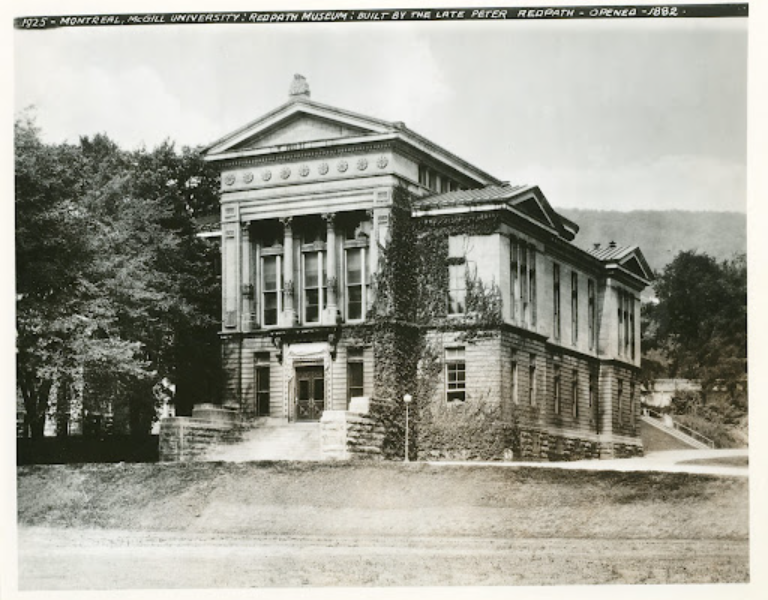Content warning: Descriptions of graphic violence
The idea of ghosts has been haunting humankind since ancient times. It comes from the theory that the human body and spirit are separate entities, and the spirit continues to linger on Earth after a person dies.
Haunted buildings and attractions advertising their spooky history are also sources of entertainment for many who like to experience the mystery and allure of the unknown. Aside from sightings of ghosts, signs of a haunting include eerie noises, strange smells, winds that knock objects over, and more. And as Donovan King, teacher, actor, and the owner of Haunted Montreal knows well, Montreal is chock-full of these signs from beyond the pale.
“A paranormal encounter is not something that fits within the scientific norms, [it is] something that is unexplainable […] like reading someone’s mind or levitation,” King said in an interview with The McGill Tribune.
The city of Tiohti:áke, or Montreal as it is known today, was founded in 1642 by Paul de Chomeday de Maisonneuve, and Jeanne Mance, but the land and its surrounding areas have historically been the home of the Haudenosaunee and Anishinaabeg peoples as well as many other Indigenous peoples for at least 12,000 years. After the first Europeans arrived in 1535, Montreal became a centre of the fur trade and has been an economic, industrial, and cultural hub ever since. But with this violent and unsettling past, the city’s wealth of traumatic history has yielded no shortage of paranormal baggage. With over 150 recorded ghost stories overall, Montreal is the most haunted city in Canada—possibly even North America, though many others eagerly claim that title.
A Little Dose of Death
If you’re trying to kill time before a movie at Cinema Banque Scotia or passing through to see a Canadiens game at the Bell Centre, you might wander through the stately Dorchester Square or its southern counterpart, Place du Canada. Today, with easy access to Ste. Catherine and other bustling downtown streets, the square is a favourite for community gatherings, protests, and rallies, including the Unity Rally in 1995. It seems to be a popular meeting place for both the living and the dead: Over the years, there have been rumours of paranormal activity, occurring most frequently after nightfall. Uneasy feelings, mumblings of prayers, and round objects, possibly so-called “ghost orbs,” hovering throughout the square have all been reported.
Formerly the Sainte-Antoine Cholera Cemetery from 1799 to 1854, the square’s grounds today include an estimated 70,000 skeletons laying underneath the lush lawns and well-trodden sidewalks, many of which are buried in unmarked mass graves. During the cholera epidemic of 1832, an estimated 9,000 people died, many of whom were laid to rest here.
However, due to the heavy doses of opium being prescribed to cholera patients at the time, some, simply in an opium-induced coma, were accidentally buried alive. Years later, during an excavation of the square, workers found coffins that had sustained damage to the inside as the victims fought to claw their way out. In Place du Canada, where a number of human remains have been discovered, people have experienced an abnormally high number of medical emergencies, including panic attacks, strokes, and heart attacks.
A Lost Piece of History
Fortunately, nothing as morbid has happened (as far as we know) at the next stop on the tour: McGill’s Redpath Museum. With construction being completed in 1882, the Redpath Museum is the oldest building in Canada built to house a museum. It contains vast collections relating to the fields of paleontology, zoology, mineralogy, and ethnology, articles of which are used daily in research projects and university courses. In an interview with The McGill Tribune, Sara Estrada, one of the educators at the Redpath Museum, explained the museum’s place in history.
“We have very special pieces that are unique and you cannot see anywhere else, for example, [a] letter from Darwin to Sir Dawson,” Estrada said.
She added that you can even see fossils in the exterior limestone of the building, but as far as she knew, no remnants of the past had come back to life in the museum. Due to the museum’s affiliation with McGill as well as its reputation as a world-renowned site of study, I should clarify that the following story has not been confirmed by anyone working at the Redpath Museum—but is a notable one nonetheless.
Of all the rumours heard about this place, the story of George the Silverback Gorilla wins the “Best Redpath Museum Myth” award. Back in the 1930s, the museum acquired George, for cultural and educational research purposes. In the 1950s, a group of McGill students disguised in lab coats entered the museum and approached the director, explaining to the trusting man that a professor required George for research purposes. Unaware of their true intentions, the director agreed. The next day, George was found on top of the Three Bares Fountain, completely relieved of his genitalia. Upon George’s return to the museum, visitors, children in particular, have become frightened by a disembodied growling emanating from the silverback, perhaps calling for the return of his genitals. Interestingly, the stolen parts were never found.
A ghost on the wall
The final stop on this tour lands you, the reader, at the corner of Rachel and St. Laurent, to a local favourite that has been serving up bluegrass nights and ghostly tales for decades. This is Barfly—and yes, that was a Guy Fieri reference. The bar’s music volume will suddenly increase when certain songs, such as “Werewolves of London” by Warren Zevon, are played. Employees have said they feel rapid rises or drops in temperature and have noticed a shadowy gentleman in a striped top who disappears before they can tell who it is, according to Haunted Montreal. Barstools have also been flung around after they were put up, suggesting someone doesn’t want the bar to close for the night. Even though this description could refer to most Plateau residents, these hauntings are overwhelmingly attributed to a former owner, Gary Sharp. Sharp owned the place, then called G. SHARP, in the late 1980s. A neighbourhood personality, he would often keep the bar open all night. Tragically and very suddenly, he died of a heart attack, but it is very possible his spirit is still keeping the place he loved company.
A story to tell
Weaving new stories with ancient legends into the category of ghost stories keeps the spirit of this genre of storytelling alive and meaningful.
“Ghost stories are a type of folklore that often complement [a] city’s history. We have a lot of activist material woven through [our ghost] stories. We are bringing issues to light such as LGBTQ+ issues, feminism, [and] post-colonialism […] along with other forms of oppression that can be challenged through this type of storytelling,” King told me.
To King, ghost stories are one of the oldest storytelling traditions of humankind, dating back to prehistoric times. While the truth of these stories lies only in the hearts of the people who tell them, there is value in recognizing how the past affects the present. Examining spooky tales them allows us to remember the trauma of the past so that humanity as a whole may learn from them and never repeat it. If ghost stories such as these help people imagine and internalize history, then the telling of them becomes all the more important. Also, if we ever forget them, our campfire stories would be all the less exciting.









